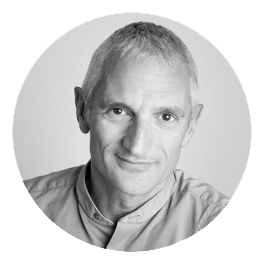Stress can have wide, varied and long-lasting impacts on the body. And in some cases, stress can manifest itself in the body physically. When this happens, it can be described as a psychosomatic disorder.
Defining psychosomatic disorders
The word psychosomatic comes from the mind (psyche) and the body (soma). It’s classified as a disease which involves both the body and the mind.
For years, leading osteopath Robin Kiashek has believed that some physical diseases can be made worse – and sometimes even caused – by mental factors such as anxiety, stress and depression.
Robin says: “I’ve written before about the impact of stress on our bodies. The same can be said for grief and how our unresolved issues of an emotional nature can weigh us down. I’m already fascinated in how emotional issues and lifestyle factors can impact on our physical wellbeing and the direct correlation with disease.”
And there’s researchers who share this same train of thought.
The correlation between stress and disease
Dr Gabor Maté, who is one of the most celebrated physicians and the leading expert in the role the mind-body connection plays in illness and health, conducted a talk, looking into the correlation between stress and disease.
During his talk, Dr Maté explored the role that stress and emotions play in an array of common diseases, including that of arthritis, cancer, diabetes, heart disease and multiple sclerosis.
A growing pattern
As Dr Maté said: “In the 1930s and 40s the gender ratio of multiple sclerosis, which is an inflammatory degenerative disease of the nervous system was one-to-one. In other words, for every man, there was a woman diagnosed.
“It’s now two-and-a-half women to every man. Now that immediately tells us it can’t be genetic because genes don’t change in a population over seven decades or even 10 decades or longer. It also can’t be diet because that doesn’t change in a population, and diet during that time didn’t change more for women than it did men. Nor can it be the climate. There is something going on. And whatever it is, it can’t just be biological.”
This point was further examined by talking about the medicine used to treat a range of symptoms. He said: “When you look at how you treat asthma to open up the airways and suppress the inflammation, you give inhalers or medication which are copies of adrenalin and cortisol.”
‘Is it possible that stress has something to do with it?’
Adrenalin and cortisol are the stress hormones in the body.
Dr Mate continued: “So we’re treating asthma with stress hormones. How do we treat multiple sclerosis?
“If you have a flare up, you are going to get an infusion of the stress hormone, cortisol. If you’ve ever been to a dermatologist with a skin flare up, some kind of chronic psoriasis or chronic eczema – most of the time you are going to get a steroid cream – a copy of cortisol.
“If you go to a Rheumatologist for inflamed joints or connective tissues, guess what they are going to give you? Steroids – cortisol. In all autoimmune diseases, I could go on. So, here’s the interesting question we’re treating all these conditions with stress hormones. But we’re not asking ourselves the simple question – is it possible that stress has something to do with the onset of this condition?”.
The direct correlation between stress and disease is something Robin will be looking into as he embarks on a 20-week training course on this topic.
Robin adds: “I’ve always been interested in the link between stress and disease and how they go hand in hand. So, it will be interesting to delve deeper into this topic to discover some of the latest and cutting edge research on this topic. Watch this space!”.

